In this article, we will outline the 9 Proven CRO Best Practices to Boost Your Ecommerce Store’s Revenue.
Conversion rate optimization (CRO) has become the cornerstone of sustainable ecommerce growth, with businesses increasingly recognizing that optimizing existing traffic often delivers better ROI than acquiring new visitors. The landscape presents significant opportunities for improvement across most online stores.
With 69.99% of all e-commerce visitors abandoning their shopping cart according to Baymard Institute’s latest research, the potential for revenue recovery through strategic CRO initiatives is enormous. The average large-sized ecommerce site can gain a 35.26% increase in conversion rate through better checkout design, demonstrating the tangible impact of well-executed optimization strategies.
This comprehensive guide explores nine battle-tested CRO tactics that focus on increasing average order value (AOV), implementing effective upselling and cross-selling strategies, and creating friction-free experiences that convert browsers into buyers.
9 Proven CRO Best Practices to Boost Your Ecommerce Store’s Revenue:
1. Master Strategic Product Recommendations Through AI-Powered Personalization
Personalization has evolved from a nice-to-have feature to a fundamental expectation. 71% of consumers expect companies to deliver personalized interactions, and 76% get frustrated when this doesn’t happen, according to McKinsey research.
The impact on revenue is substantial. Well-executed personalization strategies can significantly increase both conversion rates and average order value by delivering more relevant product recommendations and shopping experiences.
Implementation Strategy:
Deploy AI-powered recommendation engines that analyze customer behavior patterns, purchase history, and browsing data to suggest relevant products. Position these recommendations strategically:
- Product pages: Show complementary items and upgrades
- Cart page: Present last-minute add-ons
- Checkout: Offer expedited shipping upgrades
- Post-purchase: Suggest related products for future orders
Advanced ecommerce platforms are leveraging machine learning algorithms to analyze customer data in real-time, delivering hyper-relevant suggestions that feel natural rather than pushy. Tools like Blync AI are helping retailers automate this process by identifying optimal recommendation timing and product pairings based on customer behavior patterns.
Best Practice: Start with “Frequently Bought Together” recommendations and gradually introduce more sophisticated behavioral targeting based on customer segments.
2. Implement Dynamic Upselling at Critical Decision Points
Upselling remains one of the most effective ways to increase AOV, but timing and relevance are crucial. Upselling strategies encourage customers to buy a more premium version of the same product, but success depends on strategic placement and compelling value propositions.
Strategic Upselling Locations:
Product Pages: Present premium versions with clear value differentiation. Use comparison tables that highlight the benefits of upgraded options without overwhelming customers with too many choices.
Cart Page: Offer upgrades before checkout with clear savings messages. For example, “Upgrade to our premium version and save 15% compared to buying separately.”
Checkout Process: Present expedited shipping options and extended warranties as service upgrades.
Implementation Tactics:
- Use social proof (“Most popular choice”) to guide decisions
- Highlight savings when bundling premium options
- Create urgency with limited-time upgrade offers
- A/B test different value propositions to find what resonates
The key is presenting upsells as genuine value additions rather than sales tactics. Customers should feel they’re getting better value, not being manipulated into spending more.
3. Perfect Your Cross-Selling Strategy with Behavioral Intelligence
Cross-selling involves recommending complementary products that enhance the original purchase, and when executed correctly, it can significantly boost AOV while improving customer satisfaction.
Cross-Selling Placement Strategy:
Product Pages: Show accessories and complementary items that enhance the main product’s functionality. For electronics, this might include cases, chargers, or software. For clothing, consider suggesting shoes, accessories, or layering pieces.
Shopping Cart: Present items that complete the outfit or setup. Use messaging like “Complete your look” or “Don’t forget these essentials.”
Checkout: Offer small, impulse-purchase items that complement the main order.
Advanced Cross-Selling Techniques:
- Seasonal Relevance: Suggest seasonal accessories or complementary items
- Occasion-Based: Recommend products for specific use cases
- Maintenance Items: For durable goods, suggest cleaning supplies or maintenance products
- Gift Add-ons: Offer gift wrapping, cards, or complementary gift items
Modern AI-powered solutions can analyze purchasing patterns to identify non-obvious product relationships. For instance, customers who buy yoga mats often purchase candles, even though the connection isn’t immediately apparent.
4. Optimize Checkout Flow for Maximum Conversion
The checkout process is where most conversions are lost, making it a critical optimization area. 67% of all e-commerce visitors abandon their shopping cart, but many of these abandonments are preventable through strategic checkout optimization.
Checkout Optimization Essentials:
Minimize Form Fields: Only collect essential information. Each additional field reduces completion rates.
Guest Checkout Option: Don’t force account creation. Allow customers to complete purchases as guests with an optional account creation step post-purchase.
Progress Indicators: Show customers where they are in the process and how many steps remain.
Multiple Payment Options: Offer various payment methods, including digital wallets, buy-now-pay-later options, and traditional credit cards.
Security Assurance: Display security badges and SSL certificates prominently to build trust.
Checkout Upselling Opportunities:
- Express shipping options
- Extended warranties
- Gift wrapping services
- Donation opportunities (for cause-marketing)
Mobile Optimization: Ensure the checkout process works seamlessly on mobile devices, as mobile commerce continues to grow rapidly.
5. Create Compelling Bundle Offers That Drive Higher AOV
Product bundling is a powerful strategy for increasing AOV while providing customers with perceived value. Make purchasing easier by pre-selecting or highlighting the ideal quantity, like a best-value bundle or popular pack size.
Bundle Strategy Framework:
Value Bundles: Group related products at a slight discount compared to individual purchases. The discount should be meaningful enough to motivate the purchase but not so large that it erodes profit margins.
Starter Kits: Create beginner-friendly bundles that include everything needed to get started with a product or hobby.
Seasonal Bundles: Develop theme-based bundles around holidays, seasons, or special occasions.
Luxury Bundles: Offer premium versions of products with exclusive additions or higher-quality materials.
Implementation Best Practices:
- Use clear savings messaging (“Save $X when you buy together”)
- Highlight the individual prices vs. bundle price
- Create urgency with limited-time bundle offers
- Test different bundle combinations to find optimal product pairings
Psychological Pricing Tactics:
- Price bundles just below psychological thresholds ($99 instead of $100)
- Use anchor pricing to make bundles appear more valuable
- Offer multiple bundle sizes to give customers a choice while steering them toward higher-value options
6. Leverage Social Proof and Urgency to Accelerate Decisions
Social proof and urgency are powerful psychological triggers that can significantly impact conversion rates when used authentically and strategically.
Social Proof Implementation:
Customer Reviews: Display reviews prominently on product pages, with recent reviews given higher visibility.
User-Generated Content: Showcase customer photos and videos using your products.
Purchase Notifications: Show recent purchases or current browsing activity (“5 people are viewing this product”).
Expert Endorsements: Feature industry expert recommendations or certifications.
Sales Data: Share bestseller information or trending product notifications.
Urgency Tactics That Work:
Limited Inventory: Show actual stock levels when quantities are low.
Time-Limited Offers: Create genuine deadlines for special promotions.
Seasonal Urgency: Highlight shipping deadlines for holidays or special occasions.
Price Increase Notifications: Alert customers to upcoming price changes.
Exclusive Access: Offer early access to sales or new products for subscribers.
Implementation Guidelines:
- Ensure all urgency claims are truthful and accurate
- Use countdown timers sparingly and only for genuine limited-time offers
- A/B test different urgency messages to find what resonates with your audience
- Monitor customer feedback to ensure urgency tactics aren’t perceived as manipulative
7. Implement Smart Pricing Strategies That Maximize Revenue
Pricing psychology plays a crucial role in conversion optimization. Strategic pricing can increase both conversion rates and AOV simultaneously.
Dynamic Pricing Tactics:
Psychological Pricing: Use prices ending in 9, 99, or 95 to create the perception of value.
Tiered Pricing: Offer multiple price points to cater to different customer segments.
Anchor Pricing: Display higher-priced options first to make standard prices seem more reasonable.
Bundle Pricing: Price bundles to encourage higher-value purchases.
Advanced Pricing Strategies:
Personalized Pricing: Use AI to optimize pricing based on customer segments and behavior patterns.
Geographic Pricing: Adjust prices based on local market conditions and purchasing power.
Seasonal Pricing: Implement dynamic pricing for seasonal demand fluctuations.
Competitive Pricing: Monitor competitor prices and adjust strategically.
Free Shipping Thresholds: Set minimum order values for free shipping that encourage larger purchases.
Implementation Considerations:
- Test different pricing strategies with small customer segments before rolling out broadly
- Monitor competitor pricing, but don’t engage in destructive price wars
- Consider the lifetime value of customers when setting prices
- Use pricing psychology ethically and transparently
8. Optimize Product Pages for Maximum Conversion Impact
Product pages are where purchase decisions are made, making them critical conversion touchpoints. Every element on a product page should guide customers toward making a purchase.
Essential Product Page Elements:
High-Quality Images: Provide multiple angles, zoom functionality, and lifestyle shots showing the product in use.
Detailed Descriptions: Include technical specifications, benefits, and use cases.
Customer Reviews: Display reviews prominently with filtering options by rating and recency.
Clear Pricing: Show prices prominently with any discounts or savings highlighted.
Stock Information: Display availability status and, when appropriate, stock levels.
Call-to-Action Buttons: Use clear, compelling CTA buttons that stand out visually.
Advanced Product Page Optimization:
360-Degree Product Views: Allow customers to examine products from all angles.
Video Demonstrations: Show products in action to help customers understand functionality.
Size Guides and Fit Tools: Reduce return rates by helping customers choose the right size.
Related Products: Suggest complementary items and alternatives.
Trust Signals: Display security badges, return policies, and guarantee information.
9. Develop Sophisticated Email Marketing Funnels for Long-Term Revenue Growth
Email marketing remains one of the highest-ROI channels for ecommerce businesses, with strategic email funnels driving both immediate conversions and long-term customer value.
Essential Email Funnel Types:
Welcome Series: Introduce new subscribers to your brand and product range.
Abandoned Cart Recovery: Re-engage customers who left items in their cart.
Browse Abandonment: Follow up with customers who viewed products but didn’t add to cart.
Post-Purchase Upsell: Suggest complementary products after successful purchases.
Win-Back Campaigns: Re-engage inactive customers with special offers.
Advanced Email Strategies:
Segmentation: Create targeted campaigns based on customer behavior, purchase history, and preferences.
Personalization: Use customer data to personalize subject lines, content, and product recommendations.
A/B Testing: Continuously test subject lines, send times, and content formats.
Automation: Set up triggered campaigns based on customer actions and behaviors.
Cross-Channel Integration: Coordinate email campaigns with social media and paid advertising efforts.
Email Content Best Practices:
- Use compelling subject lines that create curiosity without being clickbait
- Include clear, prominent call-to-action buttons
- Optimize for mobile devices
- Test different email formats and lengths
- Include social proof and customer testimonials
Performance Metrics to Track:
- Open rates and click-through rates
- Conversion rates and revenue per email
- List growth rate and segmentation effectiveness
- Unsubscribe rates and engagement metrics
Conclusion: Building a Comprehensive CRO Strategy
An effective CRO combines data insights with customer focus. Implementing strategies systematically, rather than in isolation, is crucial for success, as companies excelling in personalization generate 40% more revenue.
Continuous testing and refinement are key. Start with relevant strategies, implement gradually, measure results, and build on successes. CRO is ongoing; adapt to evolving customer expectations, market conditions, and technology. By implementing these nine best practices, you can increase conversion rates, boost average order values, and build a more profitable ecommerce business.


